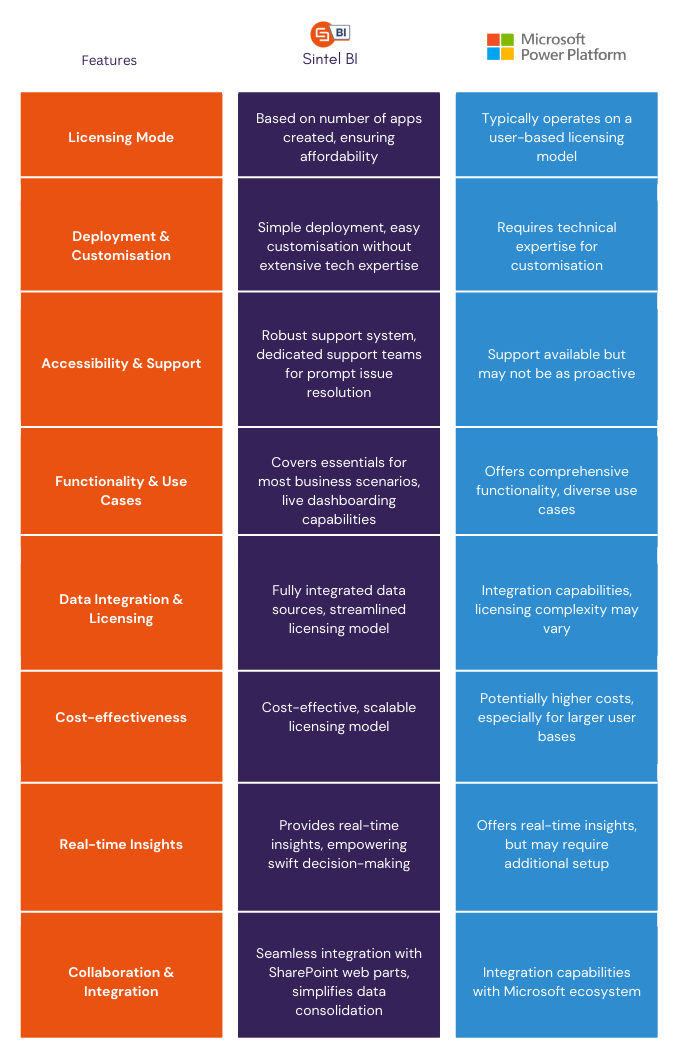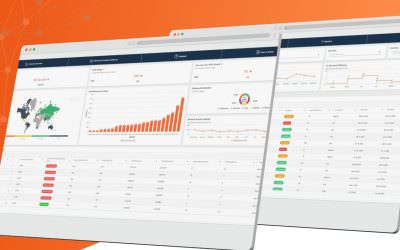
Choosing the right business intelligence (BI) platform can be challenging, especially when balancing cost, ease of use, and functionality. Two popular options are Sintel BI and Microsoft 365’s Power Platform, each with its own advantages. Here’s how they compare:
Cost-effectiveness and Licensing Model
Sintel BI uses an app-based licensing model, meaning you pay based on the number of apps, not the number of users. This makes it a cost-effective and scalable choice for businesses of all sizes.
On the other hand, Power Platform (including Power Apps) operates on a user-based licensing model. For companies with many users or fluctuating usage, this can lead to higher costs over time.

Ease of Deployment and Customisation
Sintel BI is known for its simple setup and user-friendly interface. It allows businesses to quickly customise apps to fit their needs without requiring deep technical expertise. The consistent design across its tools makes navigation easy.
Accessibility and Support
A strong support system is a big plus for Sintel BI. Users benefit from quick issue resolution and dedicated support teams, ensuring smooth operations.
Functionality and Use Cases
Sintel BI caters to many use cases for dashboarding and reporting, covering the essentials needed for most business scenarios. Its live dashboarding capabilities provide real-time insights, empowering users to make informed decisions swiftly. Moreover, the seamless integration with SharePoint web parts and the ability to merge SharePoint lists simplify data consolidation and enhance collaboration within organisations.
Data Integration and Licensing Simplicity
Sintel BI makes data integration straightforward by allowing you to easily connect and combine data from multiple sources within the platform. You don’t need to worry about complex configurations or third-party tools—everything is handled seamlessly, enabling businesses to quickly consolidate data and gain insights without extra effort.
Conclusion
Both Sintel BI and Microsoft 365’s Power Platform offer compelling solutions for organisations seeking to harness the power of data analytics and business intelligence. While each platform has its strengths, Sintel BI stands out for its cost-effectiveness, ease of deployment and customisation, robust support, comprehensive functionality, and streamlined licensing model. Ultimately, the choice between the two platforms depends on specific organisational requirements, budget considerations, and the level of customisation and support desired. However, for organisations prioritising affordability, simplicity, live data and agility in BI solutions, Sintel BI emerges as a pragmatic choice worthy of consideration.








0 Comments